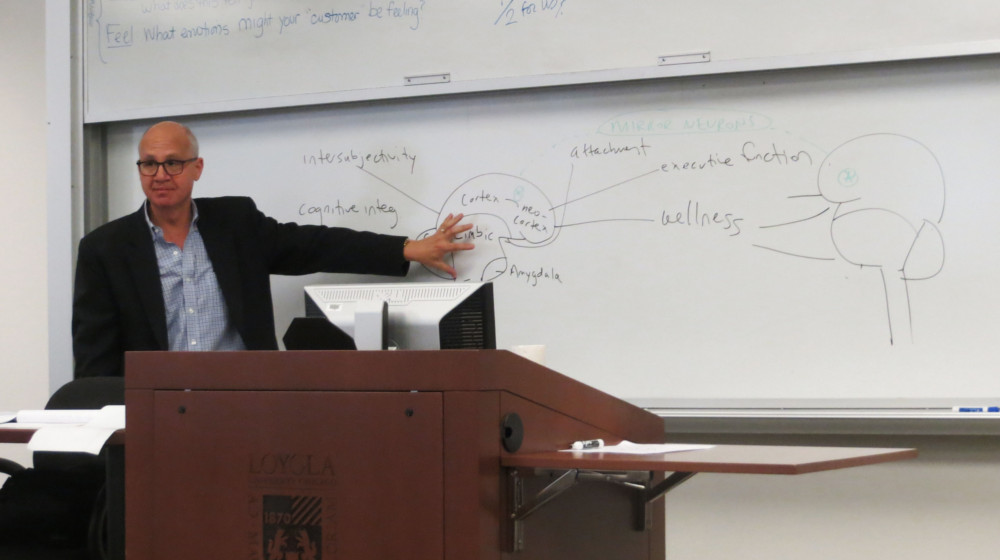Design thinking in the classroom

To improve the learning process—and at the same time make students more practice-ready at graduation—Loyola University Chicago School of Law has significantly expanded its menu of teaching styles to include more active, participatory learning approaches like team projects, collaborative exercises, and most recently, design thinking.
Design thinking is an effective, human-centered and collaborative approach to solving complex problems. This innovative process prefers the good over the perfect, action over inaction, continuous improvement over inertia, and even failure over failing to try.
Michael Kaufman, dean of the School of Law, and his wife, Sherry, an expert in the field of early childhood education law, policy, and pedagogy, approached an early childhood education law course they co-taught this summer at Loyola with design thinking in mind. The course objective: create a plan that will provide families with young children in Illinois access to high-quality early childhood education programs.
The 28 students from Chicago-area law schools who were enrolled in the JD course held at Loyola over a weekend in July were introduced to design thinking principles (listen with empathy, define, ideate, prototype, and test) through action-oriented classroom exercises. Students used various materials, including clay, to design models for an optimal early-education environment, and then worked together to assess their prototypes, make adjustments to improve upon their projects, and consider what steps might follow.
“The ability to engage in design thinking is an invaluable skill for exceptional lawyers who are trusted by their clients to solve extremely complex problems,” says Michael Kaufman. “Understanding and respecting the feelings and intentions of others is essential to good lawyering and aligns well with Loyola’s Jesuit Catholic mission of working to expand knowledge in the service of humanity through learning. Sherry and I had a lot of fun teaching the course and our students walked away with new skills that will hopefully serve them well as ethical advocates for others.”
